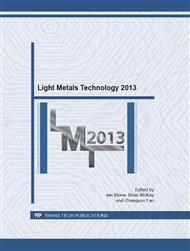p.568
p.574
p.580
p.585
p.590
p.597
p.602
p.607
p.612
Crashworthiness of Magnesium Sheet Structures
Abstract:
A hollow rectangular profile, as an example of a typical structural component made of magnesium alloy sheets has been built, tested and evaluated in order to assess its behaviour during axial crushing. The profiles were joined from plane sheets of AZ31 and ZE10, respectively, by laser beam welding and were then tested in compression. Numerical simulations have been conducted to understand the complex interplay between hardening characteristics of the materials under investigation, profile cross-section variation and energy absorption. The results from the compression testing of the profiles show that the welds are not the source of damage initiation and failure. The performance of the magnesium profiles in terms of dissipated specific energy is confirmed for small and intermediate displacements to be comparable to that of aluminium profiles. For large displacements, however, the shear-type failure mode of magnesium causes a sharp drop of the crushing force and thus limits the energy absorption. These findings demonstrate the requirement for an alloy and wrought magnesium process development specifically for crash applications which aims at progressive hardening along with high ductility for improving the bending and shear behaviour.
Info:
Periodical:
Pages:
590-594
Citation:
Online since:
July 2013
Permissions:
Share:
Citation:


